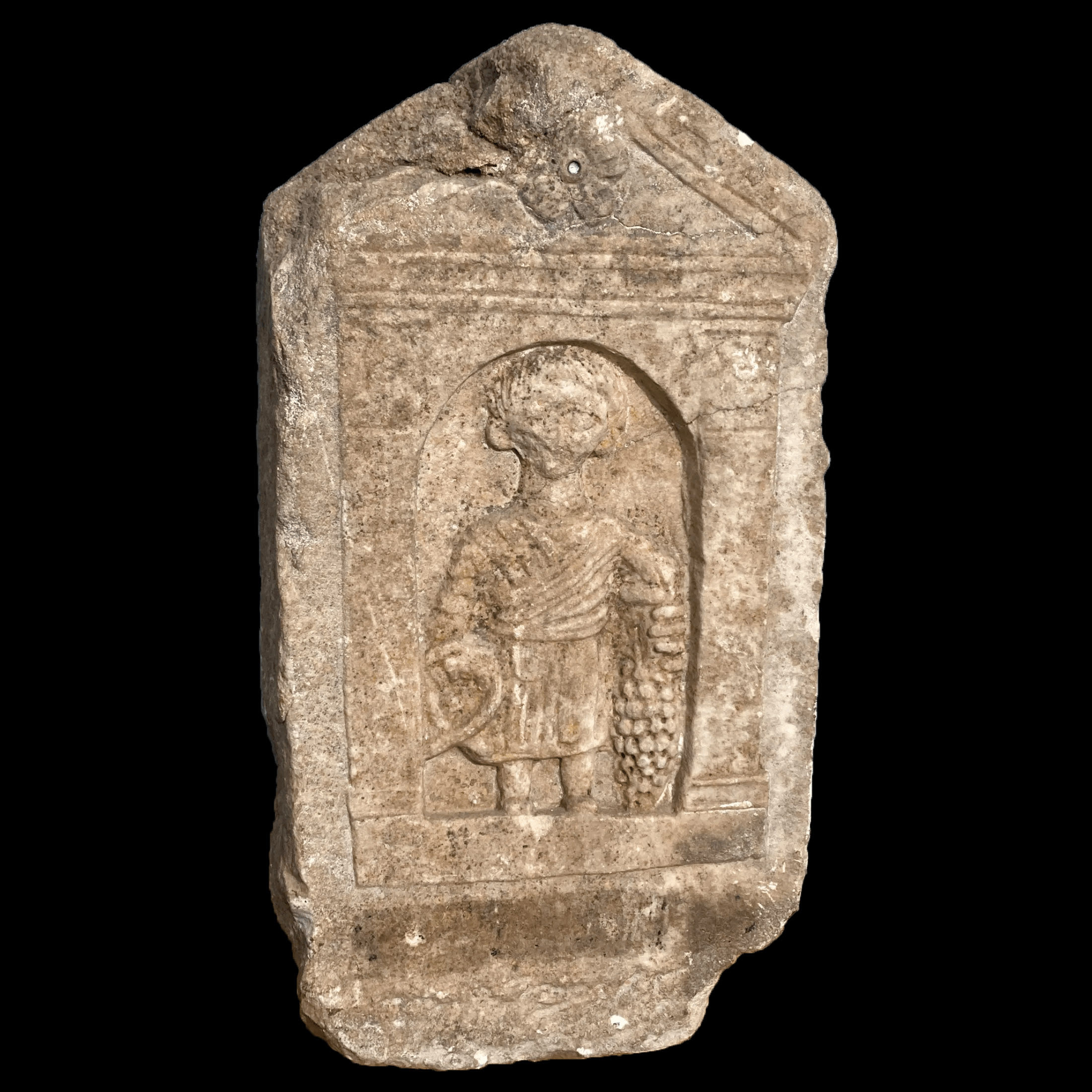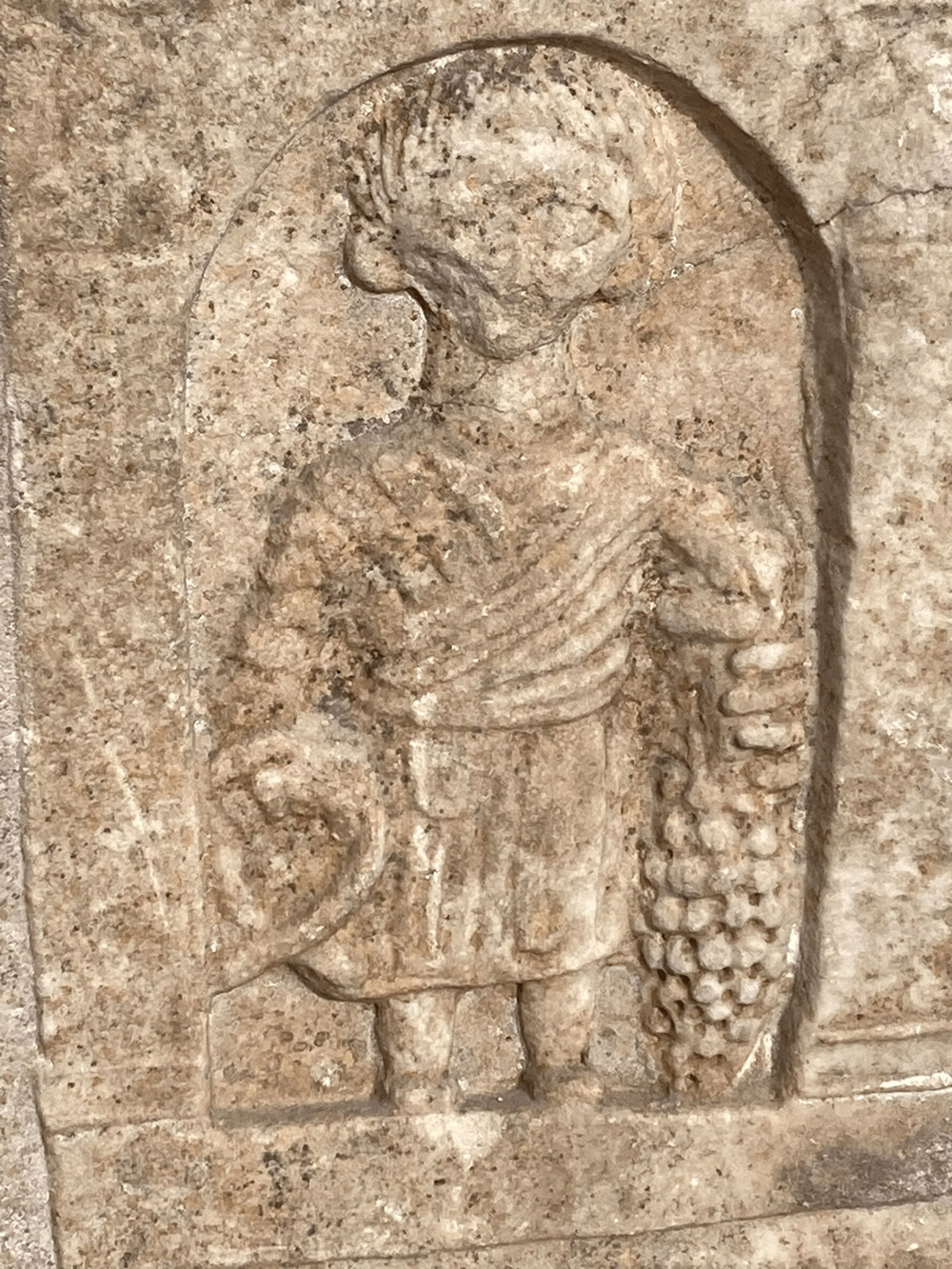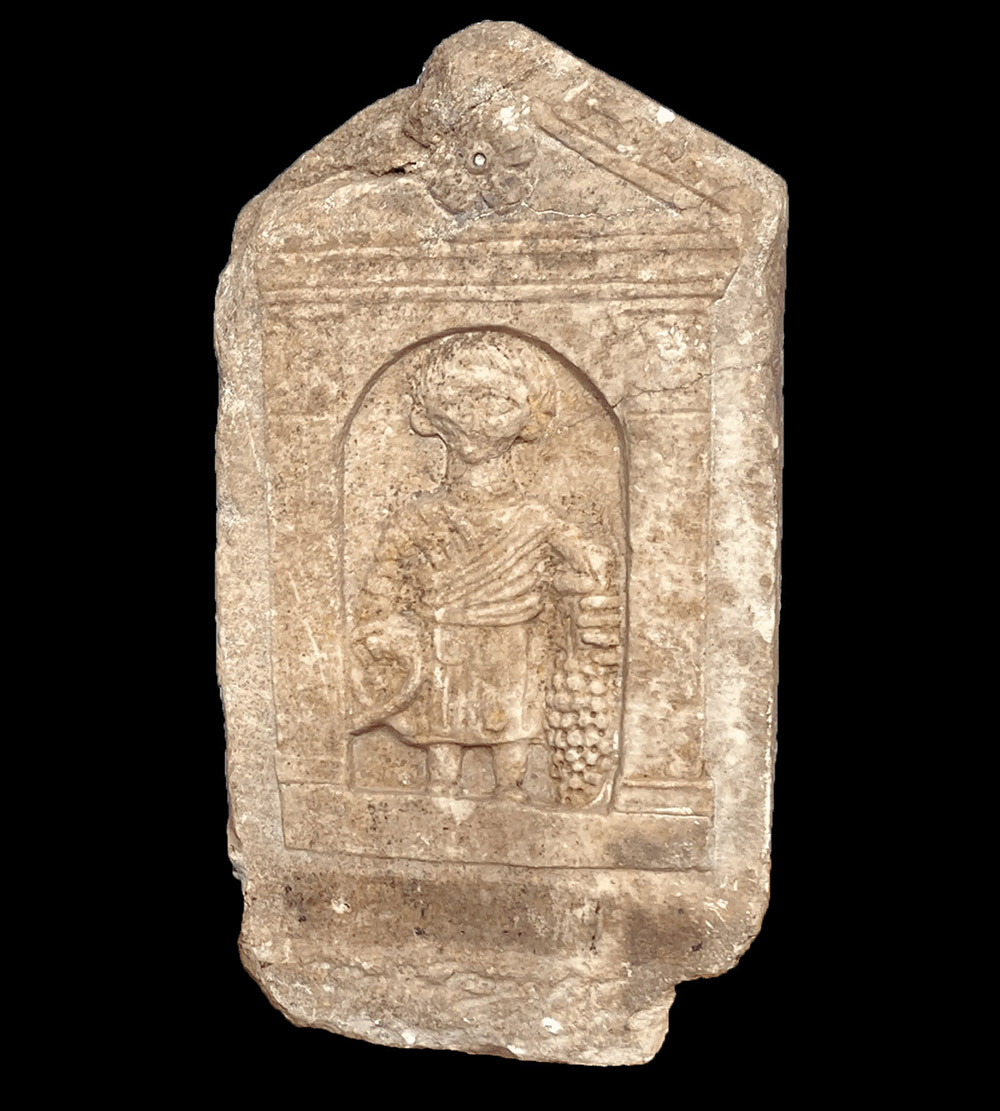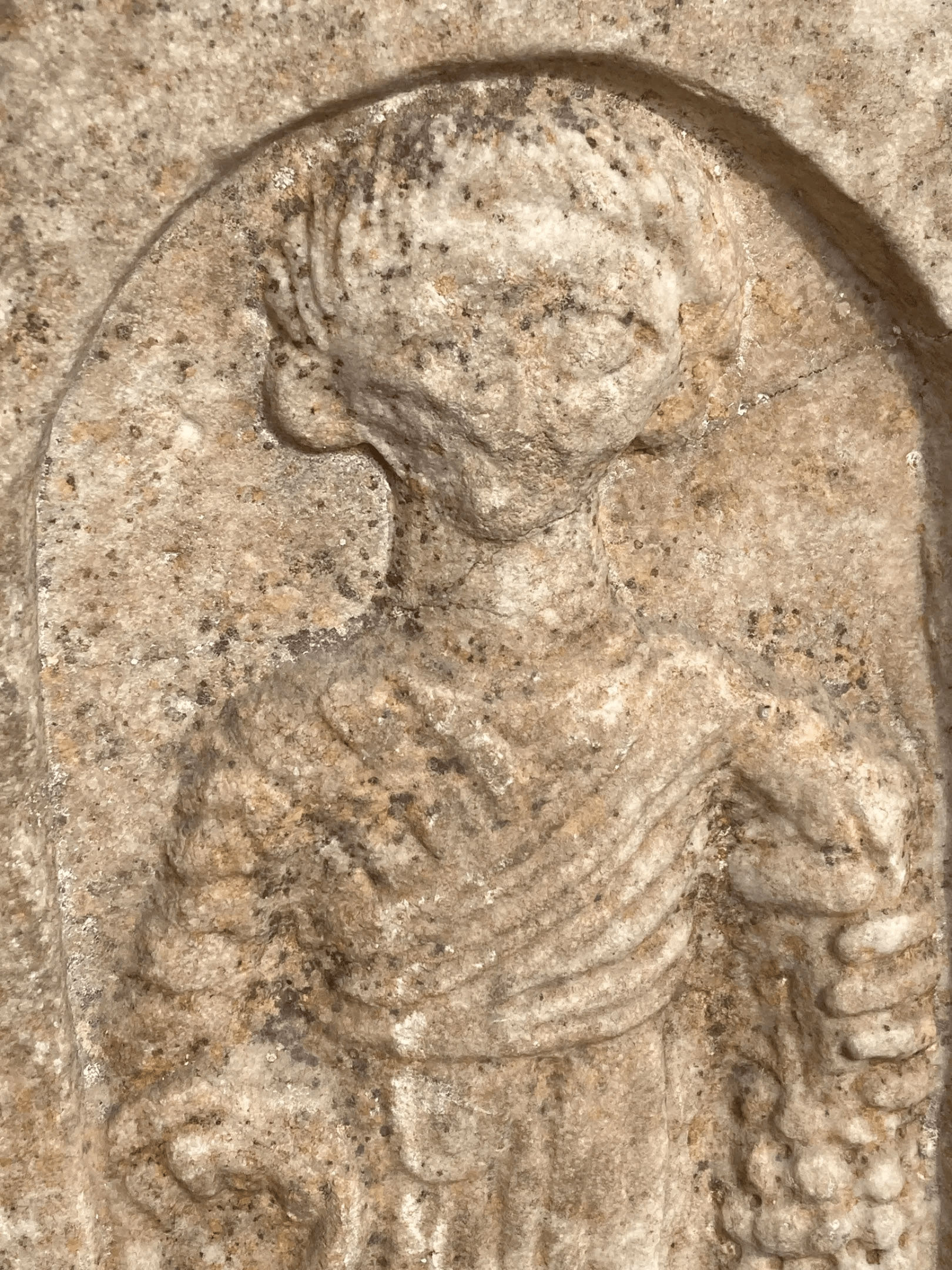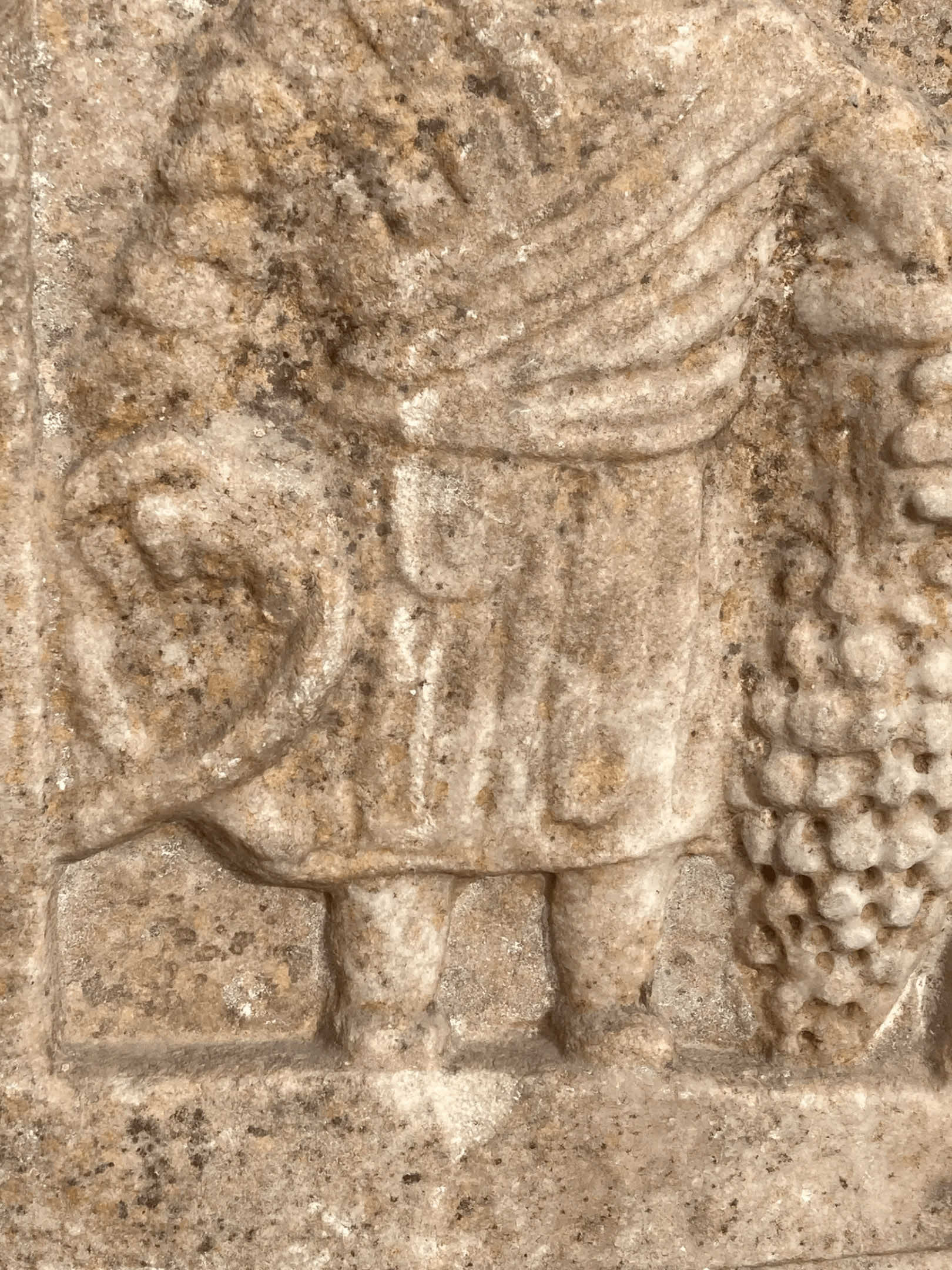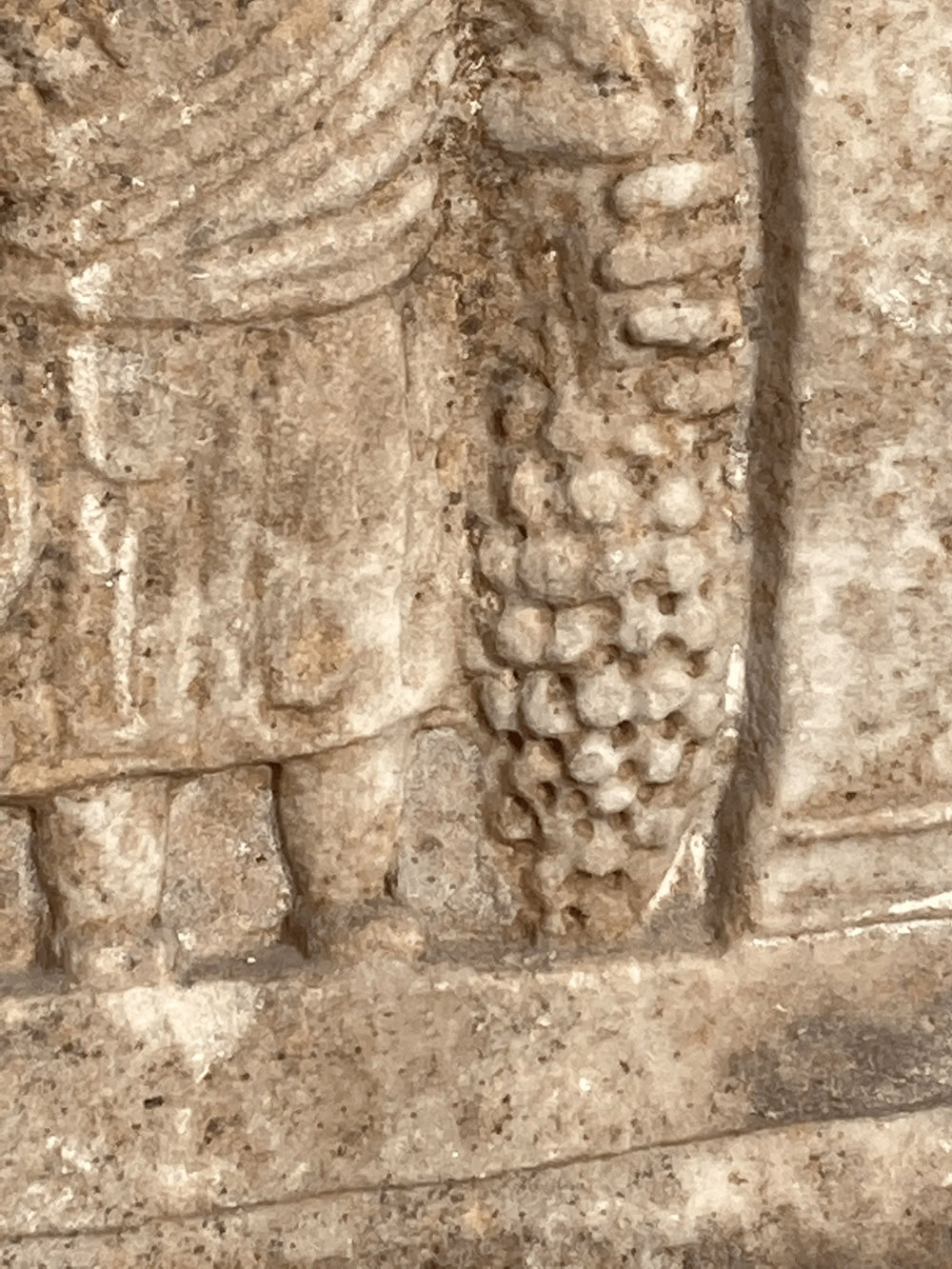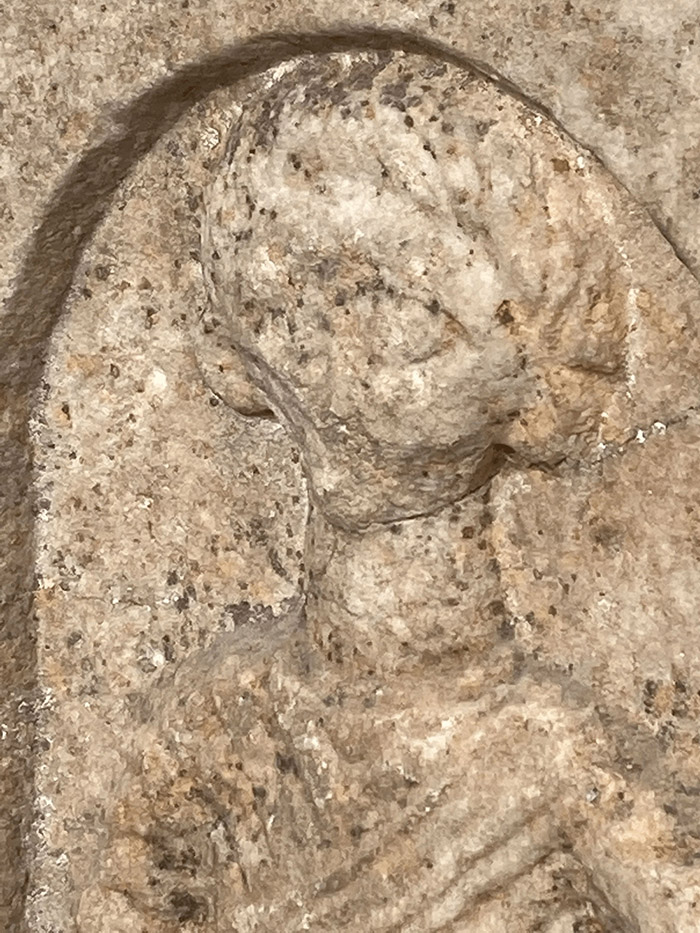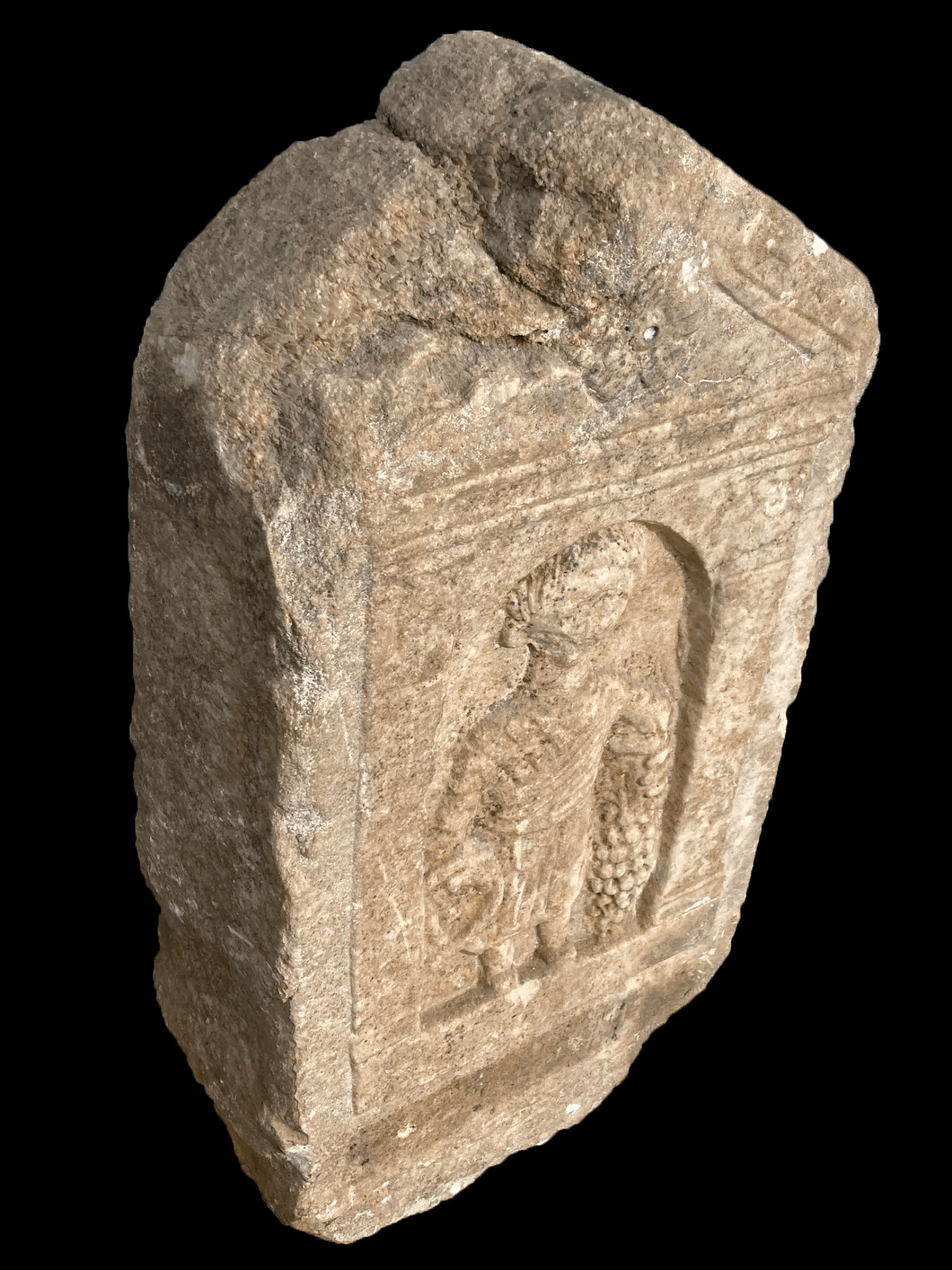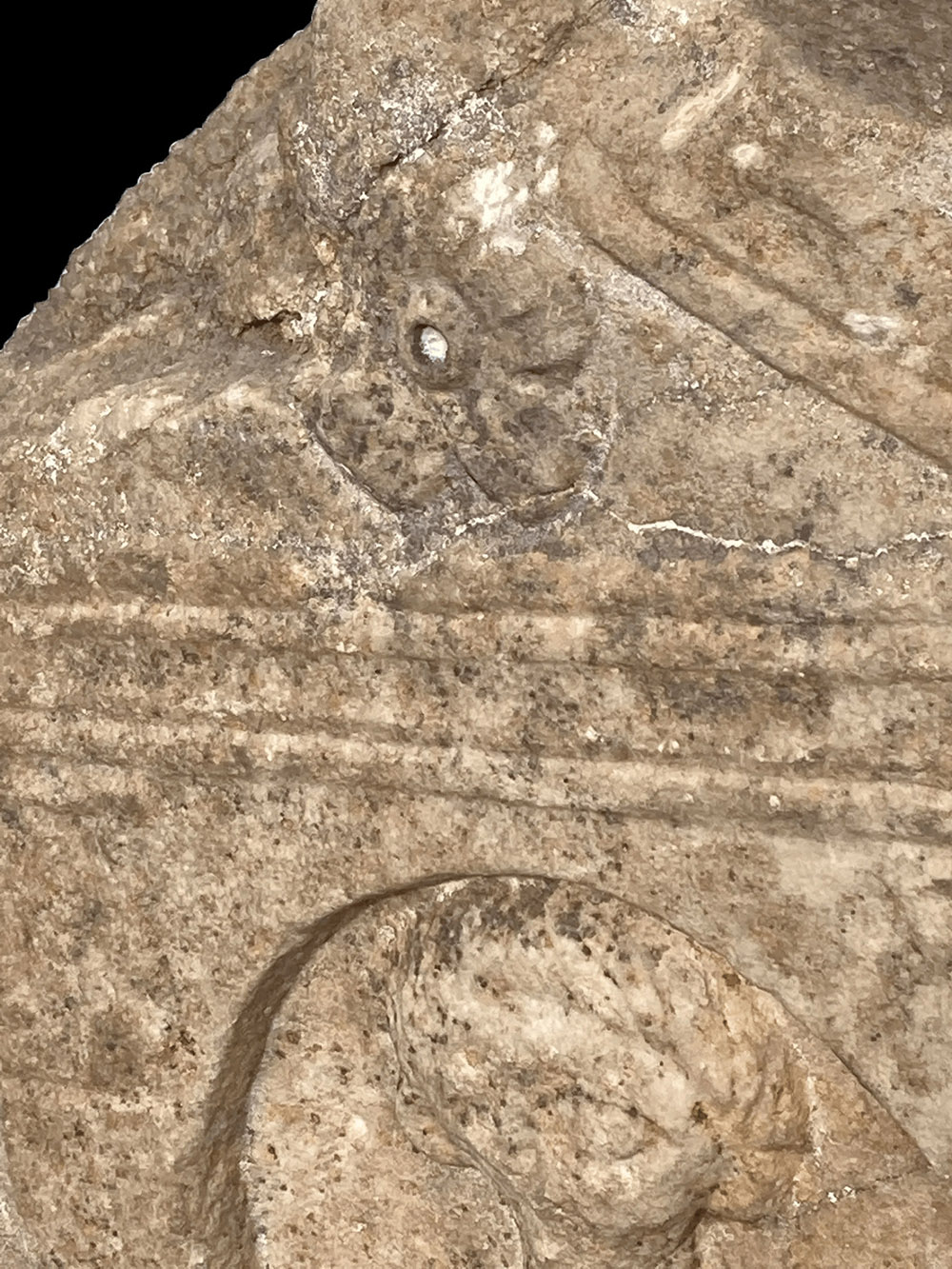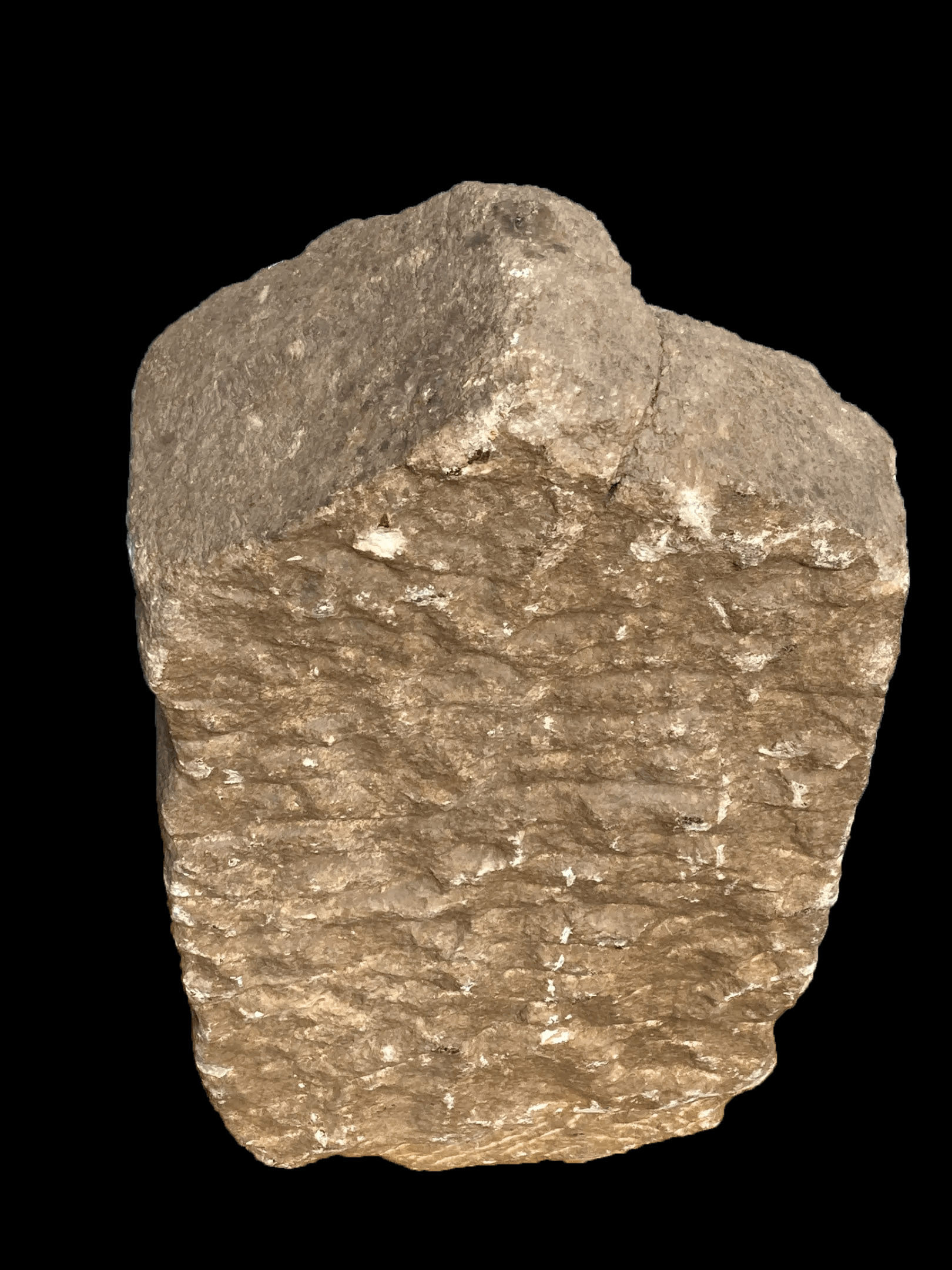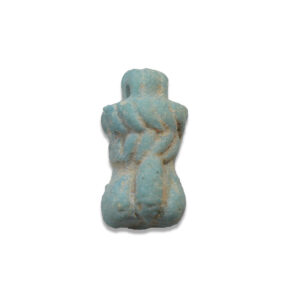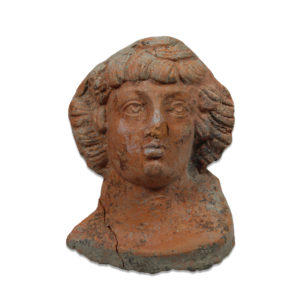Description
| ITEM | Funerary stele with a young grape picker |
| MATERIAL | Limestone |
| CULTURE | Roman |
| PERIOD | 1st – 2nd Century A.D |
| DIMENSIONS | 580 mm x 310 mm x 160 mm |
| CONDITION | Good condition |
| PROVENANCE | Ex French psychiatrist private collection, Paris, acquired between 1960 – 1980 |
Roman steles are commemorative stone slabs or pillars that were commonly used in the Roman Empire to mark graves, honor individuals, or celebrate significant events. These monuments, typically made of marble or limestone, were intricately carved and inscribed with text and images. The inscriptions often included the names of the deceased, their titles, achievements, and sometimes epitaphs or dedications from family members. The visual elements might depict portraits, scenes from the deceased’s life, or symbols related to their profession, status, or beliefs. The craftsmanship and detail of these carvings reflect the importance of memorialization in Roman culture and the desire to preserve the memory of individuals for posterity.
In addition to serving as grave markers, Roman steles were used in various other contexts, such as boundary markers, milestones, and votive offerings. For example, some steles were erected to mark the territorial limits of cities or properties, while others were placed along roads to indicate distances. Votive steles, dedicated to gods or deities, were often set up in temples or sacred sites as expressions of gratitude or to commemorate fulfilled vows. These steles provide valuable insights into the religious practices, social structures, and daily life of ancient Romans. They often included dedications that reveal personal piety and the relationships between the people and their gods.
Archaeological discoveries of Roman steles have been crucial for historians and archaeologists in reconstructing aspects of Roman life and society. The inscriptions on these steles, written in Latin or Greek, offer rich primary sources for understanding the linguistic, cultural, and historical contexts of the Roman Empire. The imagery and iconography also provide information on fashion, art, and iconography trends over different periods and regions within the empire.


